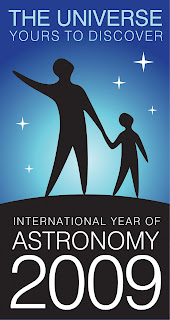Everybody likes something for free. And for stargazers, a freebie in the sky is simply irresistible.
In the 18th century, the French astronomer Charles Messier (MESS-ee-yay) produced a catalog of over 100 celestial objects that might be mistaken for comets. He was a dedicated comet hunter and didn’t want to waste time looking at fuzzy things that weren’t comets. The resulting Messier catalog has become a staple of amateur astronomy and is typically the first observing list new telescope owners work their way through.

The catalog object Messier 46, also known as M46, lies in the constellation Puppis the (ship’s) Stern. Puppis (PUH-piss) lies east and south of the well-known winter constellation Canis Major (KAY-niss) the Big Dog, prominent now in the southern sky. M46 is a visually pleasing star cluster— with a lagniappe.
For this exercise, I’d recommend a reflector telescope with at least six inches of aperture (mirror diameter). Let’s go collect our cosmic freebie, shall we?
1) Wait at least one hour after sunset to begin observing, so your sky is good and dark.
2) Face south. If you don’t know the cardinal directions at your location and you don’t have a compass, make note of where the sun sets on the horizon. That spot is approximately west. Stand with your right shoulder to the west, and you’ll be facing approximately south.

3) First locate the Hourglass asterism (recognizable star pattern) of the constellation Orion the Hunter, on or near the meridian. It hangs halfway to two-thirds of the way up from the southern horizon toward the zenith (the point directly above your head). Now locate Orion’s Belt, a diagonal line of three evenly-spaced stars cinching the middle of the hourglass.
4) Now let’s locate Canis Major. The stellar landmark that helps us find the Big Dog is blue-white Sirius, the brightest star in the night sky.
Find Sirius by drawing an imaginary line through the three stars of Orion’s Belt, moving from upper right to lower left, and continuing on until you come to a very bright star. This is spectacular Sirius.
Because Sirius (pronounced SEER-ee-us) follows Orion across the sky, ancient peoples called it the Dog, and it has come to be known as the Dog Star. In ancient star lore, Canis Major was considered one of Orion’s hunting dogs. Sirius marks the location of the dog’s snout.

5) East or left of Sirius, about double the distance between Sirius and the star Mirzam (which is just to its right, or west), lie two star clusters, M46 and M47. Both are open clusters. An open cluster is a loose collection of stars that formed around the same time in the same nebula (cloud of gas and dust).
Point your scope at the spot shown on the map above. Of the two clusters, M46 is the one farthest east. Both clusters will be around the same size in your field of view, but M47 is a bit brighter. However, M46 is our target, and you’ll know you’re looking at the correct cluster when you spot what looks like a fuzzy donut or smoke ring in it. This is the planetary nebula NGC2438— and our lagniappe.
A planetary nebula is the nebula formed when an average-sized star dies and ejects a gaseous shell of stellar material into surrounding space. Despite their name, planetary nebulas have nothing to do with planets; some of them simply resembled planets when viewed in earlier telescopes.
In the case of NGC2438, our dying star does not belong to the M46 cluster. Although we say it is “in” M46, the nebula is actually a foreground object, lying a little more than halfway to the cluster. At several billion years old, the disintegrating star is much older than the relative youngsters of the cluster. The stars of M46 are estimated to be 300 million years old.

Although the American French word “lagniappe” didn’t come into use until the mid 19th century— nearly 30 years after Messier’s death— I like to call the planetary nebula in M46 “Messier’s Lagniappe.” I think that would have made the good Frenchman smile.

Astronomy Essential: There’s a black hole at the center of our galaxy.
It’s a supermassive black hole, to boot, estimated at four million times the size of our Sun. A black hole is an extremely dense object with gravity so strong that not even light can escape it.
Our Milky Way galaxy is not, at its heart, unique. Black holes are thought to reside at the center of most galaxies. Astronomers think that black holes may be a critical component in galaxy formation, providing the mass needed to create an environment where stars can form.
You’ll never see our galaxy’s black hole, because its extreme gravity traps the light that might illuminate it. Astronomers have to watch the behavior of stars near it to infer its existence. And at 27,000 light years away, you’re not likely to make it there in your spaceship. Just one light year is nearly six trillion miles!










